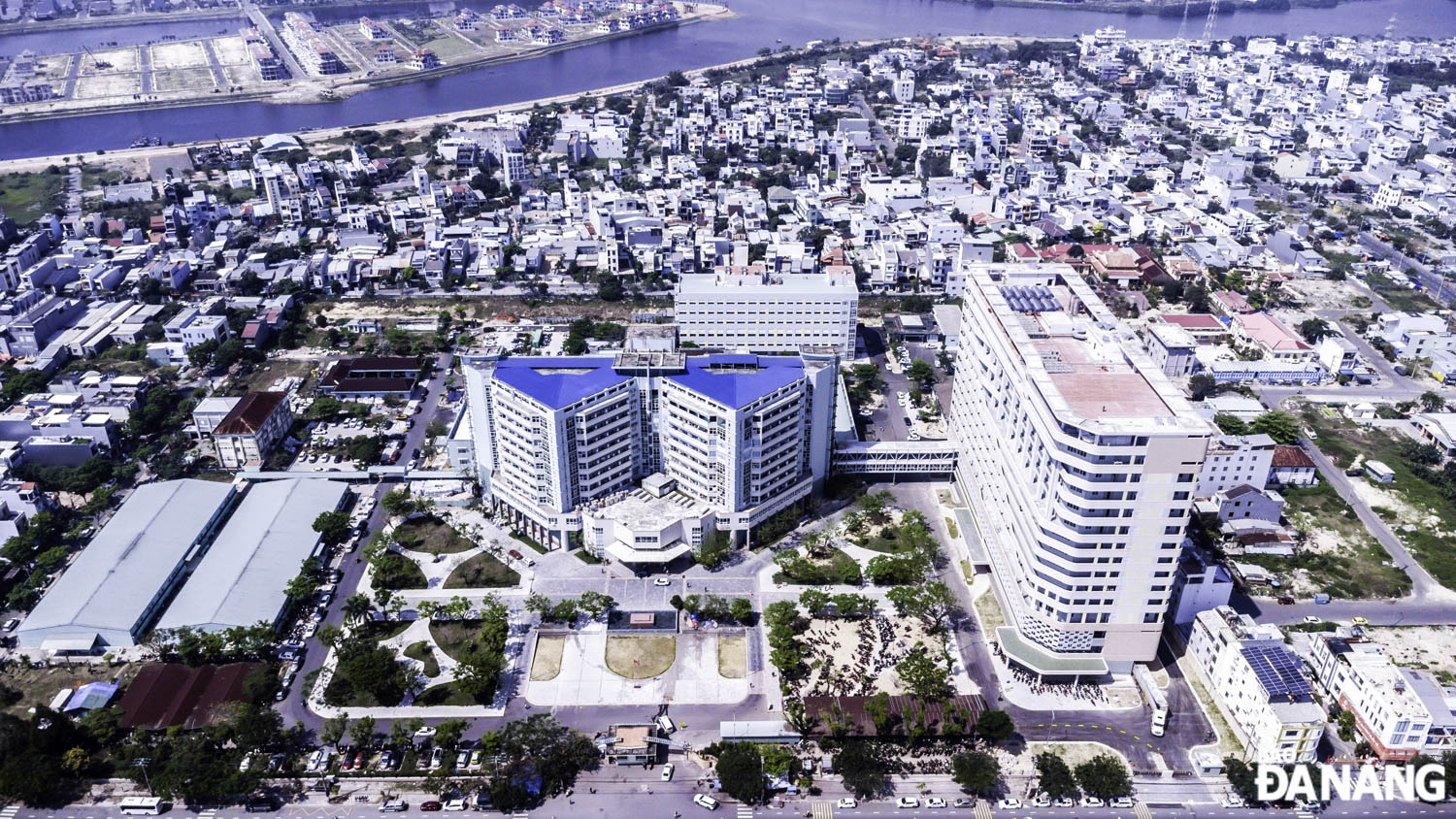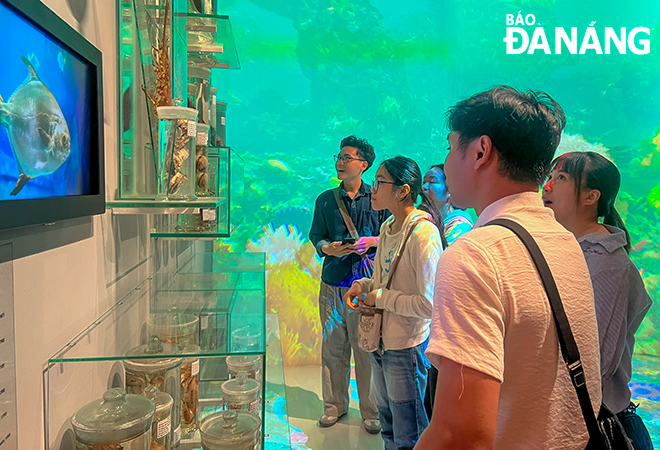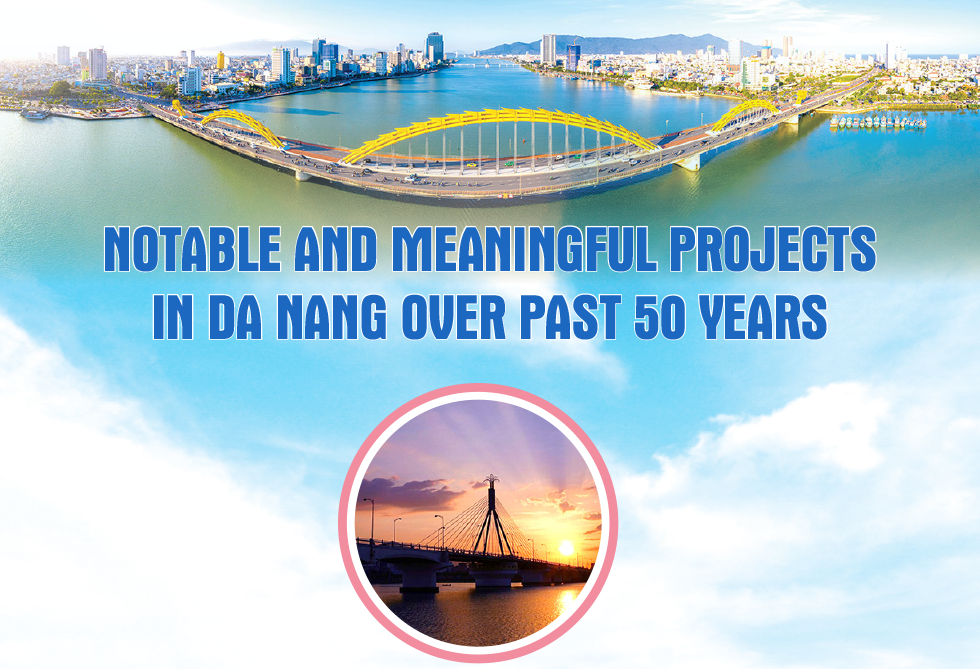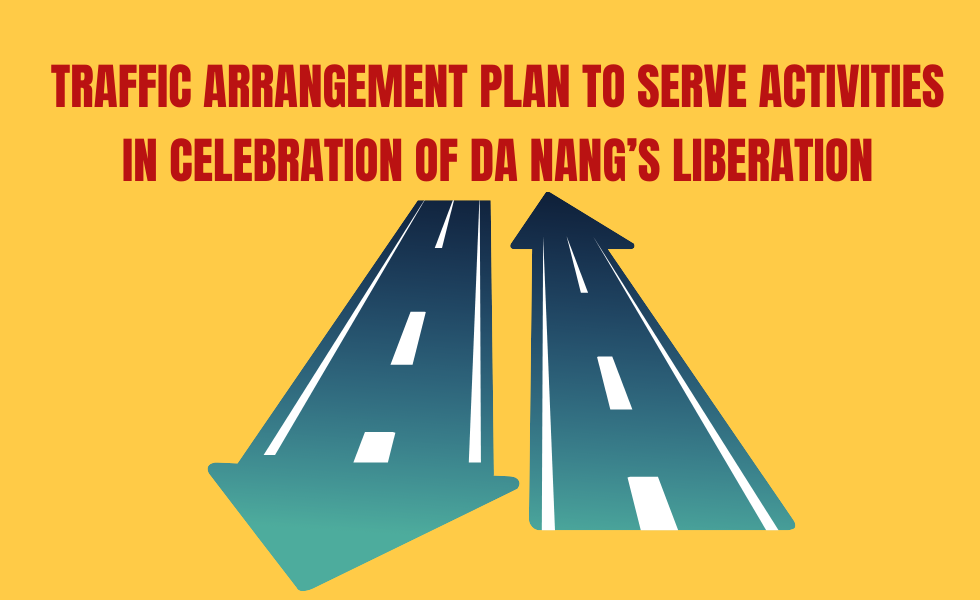Ethnic minority contributions to urban development
In implementing policies and initiatives aimed at ethnic minority communities, municipal authorities and organisations have actively supported economic growth while preserving and promoting cultural values. These efforts have contributed to stabilising lives, ensuring security, and fostering socioeconomic development across the city.
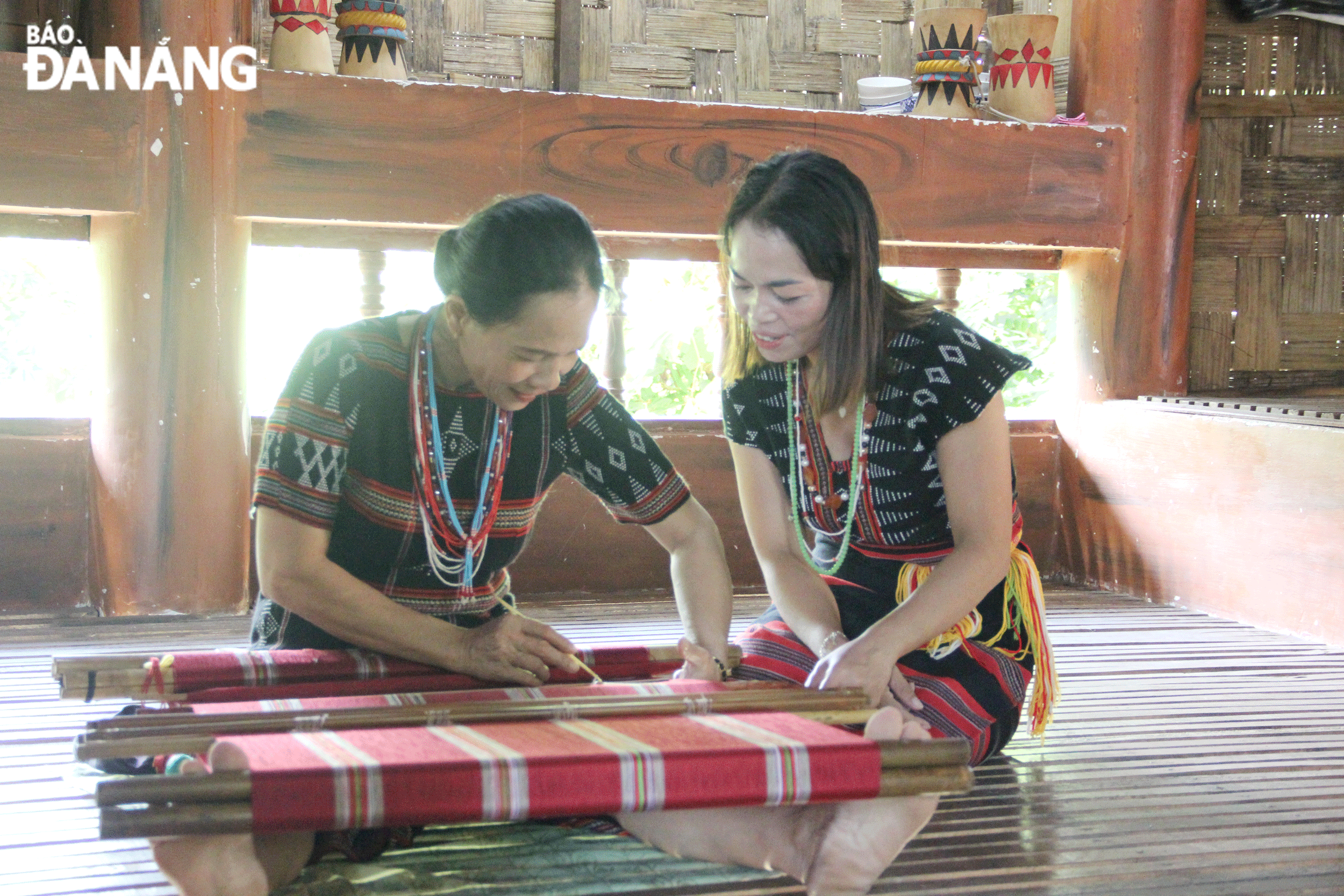 |
| The Co Tu ethnic group in Ta Lang - Gian Bi villages, Hoa Bac Commune, Hoa Vang District, has revived the traditional brocade weaving craft. Photo: XUAN HAU. |
Inspiring figures among ethnic minorities
Dr. Dinh Cong Minh, a Cham Rhe doctor born in 1977, has devoted over two decades to Da Nang Hospital, excelling in his field and prioritising patient care. A graduate of Hue University of Medicine and Pharmacy in 2002, Dr. Minh has served in several key departments, including Intensive Care and Respiratory Medicine. Regardless of his role, he has consistently delivered exceptional care.
Since 2014, Dr. Minh has led eight research projects, gaining valuable insights that enhance treatment for his patients. Alongside his professional work, he participates in charitable medical activities in remote areas. "I believe a doctor must approach their work with empathy, professionalism, and a constant desire to improve their expertise," he shared.
According to Dr. Nguyen Thanh Trung, Deputy Director of Da Nang Hospital, Dr. Minh is a dedicated professional with significant contributions to scientific research and patient care, serving as a role model for younger doctors.
Another inspiring figure is Dinh Van Hin, a young Co Tu man from Ta Lang Village in Hoa Bac Commune. Born in 1986, he holds dual roles as village head and deputy secretary of the local party cell. Hin has actively raised awareness among villagers about economic development and forest conservation, encouraging them to participate in sustainable forest management.
As head of a team managing approximately 10,000 hectares of forest, Hin advocates for community engagement in environmental protection programmes, offering incentives of VND 28 million per household annually. His efforts have significantly reduced illegal logging and promoted reforestation. He also collaborates with local authorities to connect young villagers with overseas employment opportunities, boosting their incomes. Additionally, Hin promotes traditional Co Tu dances and instruments to attract tourism.
In Trung Nghia Village, Hoa Ninh Commune, Hua Phuong Duc is a respected figure within the Chinese community. He has consistently encouraged adherence to the law and mutual economic support among his community. "We are grateful for the support from local leaders, which enables us to thrive and build a cohesive community," Duc noted.
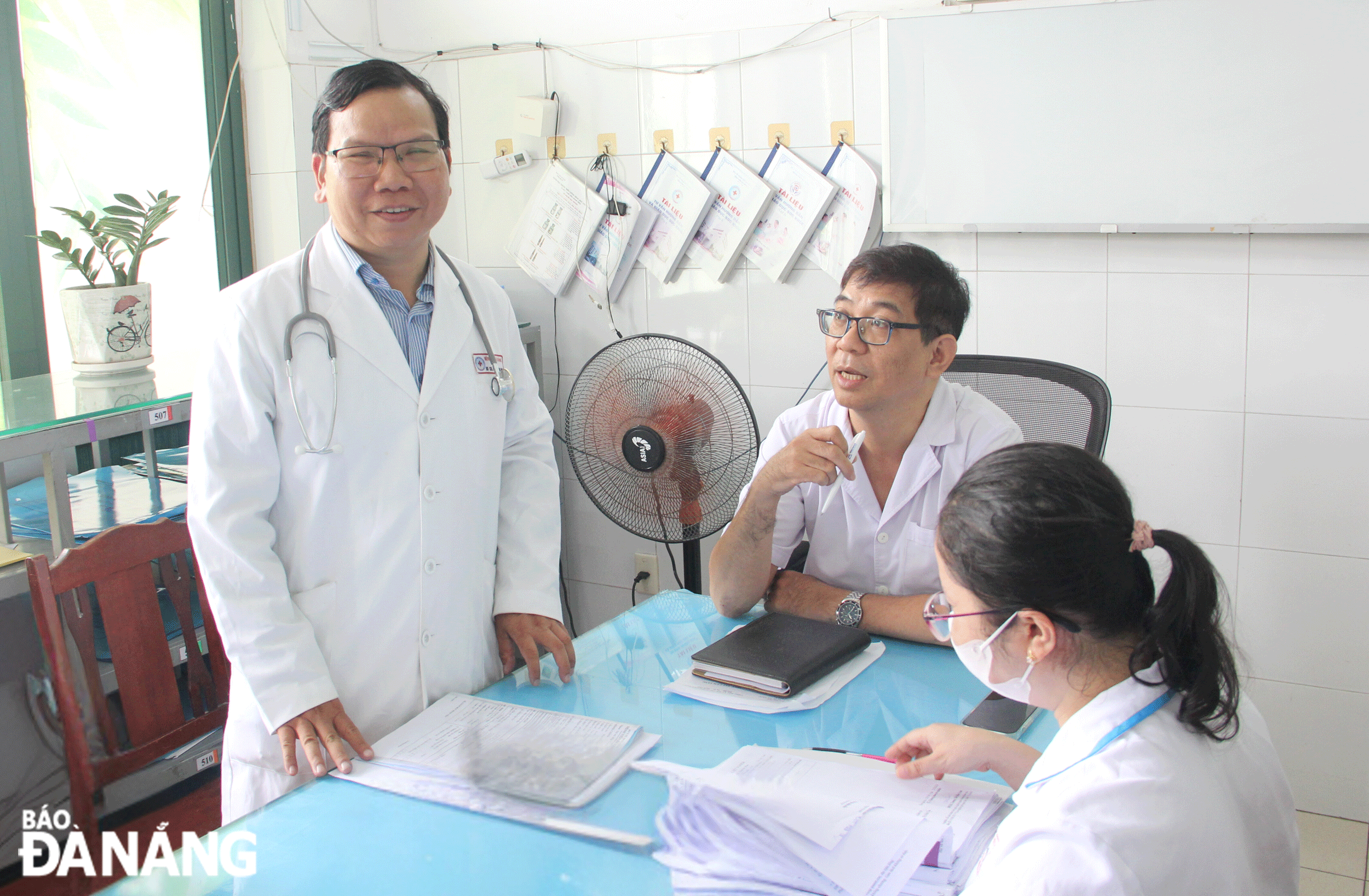 |
| Dr Dinh Cong Minh (standing), an ethnic Cham Rhe, is dedicated to his work. |
Driving economic growth
Da Nang is home to 32 ethnic groups, comprising 5,880 people. In recent years, targeted policies and investments have facilitated sustainable development. For instance, the homestay model by Ro Dzam Thi Hong in Hoa Bac has proven successful, generating income for local women. This initiative received a VND 300 million grant from a programme supporting ethnic minority economies.
Vice Chairman of Hoa Bac Commune, Ho Phu Thanh, observed significant improvements in the lives of Co Tu residents, driven by upgraded infrastructure and the development of cultural and ecological tourism. The commune plans to expand homestay services and other community-based tourism initiatives.
Over the past five years, Hoa Vang District has allocated VND 181.673 billion to essential infrastructure projects. Today, ethnic minority villages have access to national electricity, concrete roads, and modern communication networks. According to district party secretary To Van Hung, these investments have empowered local communities to contribute to economic and cultural development.
Continuously improving quality of life
Since 2019, municipal policies have significantly enhanced living standards for ethnic minority communities in Hoa Vang. Over 95% of households now own communication devices, and schools, markets, and cultural facilities have been upgraded. Initiatives include allocating 421.24 hectares of forestland to 116 households, providing VND 744 million for reforestation, and supporting economic and tourism projects.
Education has also seen improvements, with two schools attaining national standards and additional institutions in the process. Ethnic minority students benefit from subsidies for meals, school supplies, and extra tutoring. Universal health insurance covers 100% of Co Tu and Chinese Vietnamese residents.
Furthermore, community tourism cooperatives and cultural preservation projects have been established. Housing support programmes, vocational training, and international internships in South Korea have expanded opportunities for residents. In total, 423 households received VND 15.035 billion in loans for economic development, while 225 workers were introduced to new job opportunities.
Reporting by XUAN HAU - Translating by TRUC VY


